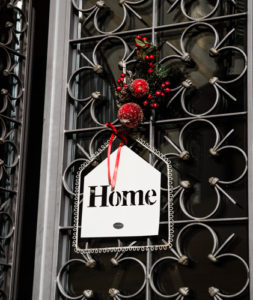 Did you move into a new house recently and your neighbors, friends, and family brought you some food or other token of their congratulations? What about if they showed up with a gift of firewood, pineapples, or frogs? Believe it or not, those have all been housewarming traditions in the past, as the practice has evolved over the centuries and is still celebrated differently throughout the world’s cultures.
Did you move into a new house recently and your neighbors, friends, and family brought you some food or other token of their congratulations? What about if they showed up with a gift of firewood, pineapples, or frogs? Believe it or not, those have all been housewarming traditions in the past, as the practice has evolved over the centuries and is still celebrated differently throughout the world’s cultures.
Here are 15 charming, interesting, or just bizarre housewarming traditions from around the world:
- The term “housewarming” comes from the very literal need in the old days to warm the home. Way before central heating, neighbors and friends would celebrate a new home by delivering firewood as a gift. The idea was to fill up every fireplace and get them toasty warm, a symbolic gesture of prosperity for the new inhabitants.
- Back in those superstitious days, the lighting of fires and warming of the house was widely believed to expel any evil spirits that might be occupying the home. It was commonly believed that “spirits” would take up residence in unoccupied homes, so they needed to be exorcised before it was safe for children to live there.
- An interesting housewarming present from American history is the gift of bread, salt, and wine. Still popular at some churches in Florida, each item has significance: bread so the house will never go hungry, salt so life will always have flavor, and wine so the home will always have cause to celebrate.
- In Britain in the 1800’s, King Edward III mandated that only “certain ranks” of elite and wealthy people were allowed to have housewarming parties. For those aristocrats, elaborate and formal affairs ensued, sometimes with 10,000 guests attending the sware!
- Tradition in Scotland calls for a frog is an omen of good fortune and fertility, so a likeness of a frog (usually wooden or ceramic) is often given as a housewarming gift.
- The French call a housewarming party a “pendaison de crémaillère,” or “hanging of the chimney hook,” a term that goes back to medieval times.
- When a house’s construction was complete, the new owners invited everyone who helped over for dinner as a big thank you. To cook enough food, the meal was prepared in a large pot hung over the fire. They regulated the temperature of the pot by adjusting the chimney hook up or down, so a hook became the ceremonial final touch to the house for good luck, and a celebration for those who helped.
- The tradition of “potluck” and communal meals for friends and neighbors sprung from this European and early-American housewarming tradition, where a large pot of food hung from the chimney hook to feed everyone.
- In ancient Germany, oak trees were considered the “trees of heaven,” so ancient tribes of Norseman considered their acorns a symbol of protection. So they placed these acorns on windowsills to ward off evil spirits and bless the house with security. Still to this day, you often see acorn-themed housewarming presents or acorns on wreaths.
- Germans celebrate a housewarming these days with stereotypical practicality, bringing gift certificates as presents. But they also show up with a homemade dish for the homeowners’ first meal (and, of course, some tasty German brews to wash them down).
- Strangely, the pineapple became a common housewarming gift at one point, a ritual that goes back to the time of Christopher Columbus. In fact, when Columbus came upon the Caribbean island of Guadalupe, the island was abundant with pineapples. So Columbus and his crew stocked their ships for the return trip to Europe, and the pineapple became a symbol of hospitality, safe return, and a sweet welcome gift.
- In some countries, bluebirds are gifts bestowed upon new homeowners because they are believed to bless the new abode with happiness and good luck. To this day, people sometimes give bluebird-themed gifts like fine china or wall hangings to people who have just bought a home.
- In the majestic southeast Asian nation of Thailand, Buddhist monks perform rituals at a new home alongside family and friends for good luck and blessings.
- In India, the housewarming ceremony is called Gruha PraveshPravesham, which translates to “Entering New House.” In some predominantly Hindu areas, a sacred cow is the first to walk through the front door of the new home. I don’t think that would be well-received here in the U.S.!
- “Burden baskets” are a custom that started with the Apache Indians. They placed these baskets at the front door to capture the worries and stress of daily life, as a way of leaving their burdens at the door. Baskets that were woven together also symbolized community, family, and interconnectedness – a pretty great housewarming tradition!
***
What’s the best (or worst!) housewarming gift you’ve ever recevied?
